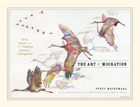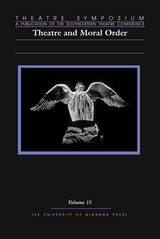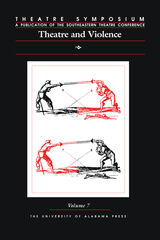5 books by Rick, John W.

The Art of Migration
Birds, Insects, and the Changing Seasons in Chicagoland
Paintings by Peggy Macnamara
University of Chicago Press, 2013
Tiny ruby-throated hummingbirds weighing less than a nickel fly from the upper Midwest to Costa Rica every fall, crossing the six-hundred-mile Gulf of Mexico without a single stop. One of the many creatures that commute on the Mississippi Flyway as part of an annual migration, they pass along Chicago’s lakefront and through midwestern backyards on a path used by their species for millennia. This magnificent migrational dance takes place every year in Chicagoland, yet it is often missed by the region’s two-legged residents. The Art of Migration uncovers these extraordinary patterns that play out over the seasons. Readers are introduced to over two hundred of the birds and insects that traverse regions from the edge of Lake Superior to Lake Michigan and to the rivers that flow into the Mississippi.
As the only artist in residence at the Field Museum, Peggy Macnamara has a unique vantage point for studying these patterns and capturing their distinctive traits. Her magnificent watercolor illustrations capture flocks, movement, and species-specific details. The illustrations are accompanied by text from museum staff and include details such as natural histories, notable features for identification, behavior, and how species have adapted to environmental changes. The book follows a gentle seasonal sequence and includes chapters on studying migration, artist’s notes on illustrating wildlife, and tips on the best ways to watch for birds and insects in the Chicago area.
A perfect balance of science and art, The Art of Migration will prompt us to marvel anew at the remarkable spectacle going on around us.
As the only artist in residence at the Field Museum, Peggy Macnamara has a unique vantage point for studying these patterns and capturing their distinctive traits. Her magnificent watercolor illustrations capture flocks, movement, and species-specific details. The illustrations are accompanied by text from museum staff and include details such as natural histories, notable features for identification, behavior, and how species have adapted to environmental changes. The book follows a gentle seasonal sequence and includes chapters on studying migration, artist’s notes on illustrating wildlife, and tips on the best ways to watch for birds and insects in the Chicago area.
A perfect balance of science and art, The Art of Migration will prompt us to marvel anew at the remarkable spectacle going on around us.
[more]

Neotropical Birds
Ecology and Conservation
Douglas F. Stotz, John W. Fitzpatrick, Theodore A. Parker III, and Debra K. Moskovits
University of Chicago Press, 1996
Four of the world's leading ornithologists and ardent conservationists have produced this unique synthesis of the ecological information on all 4,037 species of birds found from Mexico south to Tierra del Fuego. In tables that cover more than 300 pages and include much of their own unpublished data, the authors summarize details on 40 key ecological parameters for each bird species. Additional data and further analyses are provided for migratory species.
Because bird communities are good indicators of habitat type and condition, and because extensive bird surveys can be done quickly, bird communities are critical to rapid evaluations of an ecosystem's biological value and integrity. The authors analyze the bird species of major habitats from a conservation perspective, and develop specific guidelines to illustrate how governments, conservation organizations, and wildlife managers can use this ecological information to anchor conservation strategies on sound biological reality.
"Students of ecology and wildlife management, as well as conservationists, will benefit from this book . . . . Governmental and conservation agencies should use this book when making critical decisions about where to focus their efforts as they work to preserve the environment in fragile regions of the world." —Edward I. Saiff, Science Books & Films
Because bird communities are good indicators of habitat type and condition, and because extensive bird surveys can be done quickly, bird communities are critical to rapid evaluations of an ecosystem's biological value and integrity. The authors analyze the bird species of major habitats from a conservation perspective, and develop specific guidelines to illustrate how governments, conservation organizations, and wildlife managers can use this ecological information to anchor conservation strategies on sound biological reality.
"Students of ecology and wildlife management, as well as conservationists, will benefit from this book . . . . Governmental and conservation agencies should use this book when making critical decisions about where to focus their efforts as they work to preserve the environment in fragile regions of the world." —Edward I. Saiff, Science Books & Films
[more]

Past Presented
Archaeological Illustration and the Ancient Americas
Joanne Pillsbury
Harvard University Press, 2012
Illustrations remain one of the fundamental tools of archaeology, a means by which we share information and build ideas. Often treated as if they were neutral representations, archaeological illustrations are the convergence of science and the imagination. This volume, a collection of fourteen essays addressing the visual presentation of the Pre-Columbian past from the fifteenth century to the present day, explores and contextualizes the visual culture of archaeological illustration, addressing the intellectual history of the field and the relationship of archaeological illustration to other scientific disciplines and the fine arts. One of the principal questions raised by this volume is how do archaeological illustrations, which organize complex sets of information, shape the construction of knowledge? These visual and conceptual constructions warrant closer scrutiny: they matter, they shape our thinking. Archaeological illustrations are a mediation of vision and ideas, and the chapters in this volume consider how visual languages are created and how they become institutionalized. Past Presented: Archaeological Illustration and the Ancient Americas is about the ways in which representations illuminate the concerns and possibilities of a specific time and place and how these representations, in turn, shaped the field of archaeology.
[more]

Theatre Symposium, Vol. 15
Theatre and Moral Order
M. Scott Phillips
University of Alabama Press, 2007
The essays gathered together in Volume 15 of the annual journal Theatre Symposium investigate how, historically, the theatre has been perceived both as a source of moral anxiety and as an instrument of moral and social reform.
Essays consider, among other subjects, ethnographic depictions of the savage “other” in Buffalo Bill’s engagement at the Columbian Exposition of 1893; the so-called “Moral Reform Melodrama” in the nineteenth century; charity theatricals and the ways they negotiated standards of middle-class respectability; the figure of the courtesan as a barometer of late nineteenth and early twentieth-century moral and sexual discourse; Aphra Behn’s subversion of Restoration patriarchal sexual norms in The Feigned Courtesans; and the controversy surrounding one production of Tony Kushner Angels in America, during which officials at one of the nation’s more prominent liberal arts colleges attempted to censor the production, a chilling reminder that academic and artistic freedom cannot be taken for granted in today’s polarized moral and political atmosphere.
[more]

Theatre Symposium, Vol. 7
Theatre and Violence
John W. Frick
University of Alabama Press, 1999
READERS
Browse our collection.
PUBLISHERS
See BiblioVault's publisher services.
STUDENT SERVICES
Files for college accessibility offices.
UChicago Accessibility Resources
home | accessibility | search | about | contact us
BiblioVault ® 2001 - 2024
The University of Chicago Press









